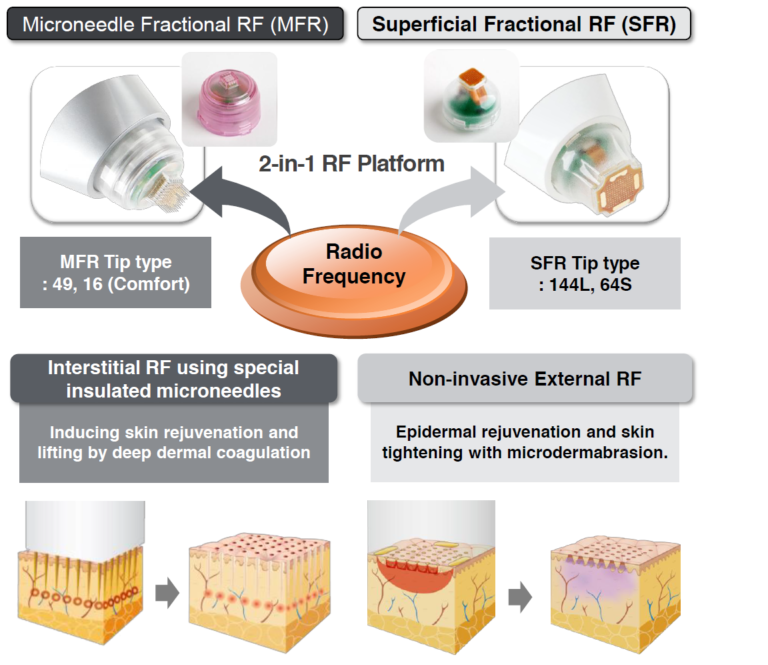Acne scarring is one of the most common negative side effects of acne caused by the uneven formation and deposition of collagen around the inflamed follicles. The scarring creates a negative impact on an individual’s quality of life. It is often associated with anxiety, depression, low self-esteem, and even poor academic performance. Over recent time periods, medical interventions have evolved to successfully decrease the visibility of scars. The types of medical treatment for acne scarring have been grouped into two broad categories: energy-based and non-energy based techniques.
In today’s post, energy-based techniques, such as lasers and radiofrequency devices, will be discussed in further detail.
Lasers are the most common method of energy-based techniques and can be further classified into ablative, fractional ablative, and non-ablative. In the past, the ablative laser method was widely used due to its high success rate just after one session. The procedure included the removal of the epidermis and partially dermis layers on the affected skin area(s), which was leading to remodeling and neocollagenesis. The “gold standard” of laser resurfacing is CO2 fractional laser ablation that has the scientific evidence for this type of resurfacing.
The recent years’ other alternatives, such as radiofrequency devices became also available.
Radiofrequency (RF) devices imply the technique of passing electrical current flows through the skin between the electrode-pin rows which in return generates deep dermal heating. As a result, the injury of the skin is induced which causes a natural healing process and stimulates the dermal collagen to remodel.
The microneedling radiofrequency (MRF) devices imply the usage of multiple needles which deliver RF directly into the dermis layer. The needles are already insulated which removes the risk of potential electrothermal damage(s). Moreover, it is the only technique that enables the control of depth levels by needles which allows discrete electrothermal coagulation to be done at different levels of dermis.

Centre for Medical and Surgical Dermatology offers radiofrequency treatment as one of its options to treat acne scarring. For more information about this procedure, visit the following link:
Centre for Medical and Surgical Dermatology offers various acne scarring removal procedures that are individual for each patient. For more information on the acne condition, visit the following link:



